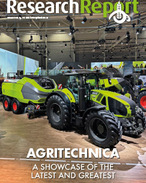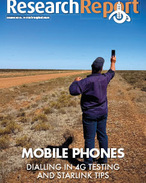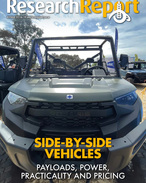This article is 3 years old. Images might not display.
Agriculture Victoria now has a useful vehicle biosecurity risk assessment checklist available to help decide if a vehicle requires a clean down before re-entering a property to prevent the introduction of pests and diseases on farm.
Agriculture Victoria Grains Biosecurity officer, Jim Moran, said the checklist was produced for grain growers by the Grains Farm Biosecurity Program.
"The Vehicle Biosecurity Risk Assessment Tool is a quick reference guide for assessing a vehicle that has travelled off a property or is not stationed on a property," Moran said.
He said the checklist gave grain growers a quick assessment strategy to help them determine if a vehicle requires a clean down before re-entering their property.
"For example, the checklist suggests key questions to consider when a vehicle either arrives or re-enters, such as: Where has the vehicle been and what is the likelihood it has come into contact with weeds or other pests?
"What were the road conditions it came on? Dry, damp, muddy or flooding? - these will all have an impact on the level of risk the vehicle represents to your farm."
Moran said the checklist was comprehensive but still simple and easy to use and included prompts about road surfaces travelled (including paddocks) and their corresponding biosecurity risk level ratings.
He said depending on the level of risk assessed the checklist then provided practical solutions for treating the vehicle.
"But remember if it's wet conditions forget it. Vehicles shouldn't be entering the productive areas of your property when it is wet or flooded unless there is an urgent need," Moran said.
"Mud sticks to tyres and is flicked up into the hard to see and clean components, giving weeds, pests and diseases, a ride to the next paddock or property.
"Flood water behaves similarly, washing muddy water over vehicles and machinery but also can provide a means of transport for weeds, pests and diseases, spreading around the property or district as it moves.
"The best tactic is not drive onto muddy or flooded paddocks and protect your farm's production zones from the introduction and spread of pests, weeds and diseases," he said.
For more information on farm biosecurity or help in developing your Vehicle Biosecurity Risk Plan contact Jim Moran at jim.moran@agriculture.vic.gov.au or visit https://bit.ly/3wq98TK























